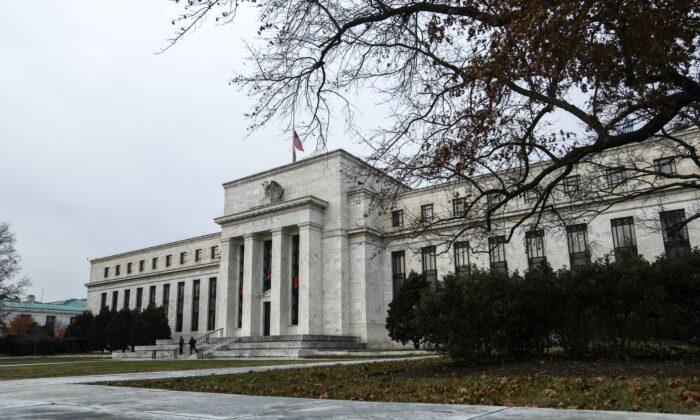The job of a responsible central bank is to maintain the value of the currency in such a way that full employment isn’t jeopardized.
The value of a currency can be manipulated in a number of ways. Historically, a king could debase the coins—though no one probably puts gold in coins that are intended to be a means of exchange. (If you could bend the coin in your teeth, you knew it at least had some minimum amount of pliable gold still in it.)
Central banks today can destroy the value of a currency by printing or creating too much of it. Too many dollars would lead it to lose value on foreign exchange markets—i.e., needing more dollars to buy fewer yen or euros or British pounds. Printing or creating too much currency also causes inflation.
Reagan had a great point about inflation: “Inflation is as violent as a mugger, as frightening as an armed robber, and as deadly as a hit man.”
If a central bank doesn’t create enough money, folks won’t have enough money to hire all the workers they want, buy the machinery they need, or make good investments.
As a very simple rule of thumb, an economy needs to create new currency to cover all the new economic activity expected over the next year. In the United States, that means about 1 percent for population growth, plus about 2 percent to account for some small inflation (preventing asset prices from going down, so banks don’t become afraid to lend), plus another 2 percent to 4 percent, depending on the expected growth rate in the real economy.
New Inflation Target
The Fed’s new inflation target is now “slightly more than 2 percent.” We’re likely to hear more about that after the next Fed meeting, which is expected to conclude on Sept. 16.In the meantime, what does the new inflation target mean for The Common Man and The Common Woman? I think the best way to illustrate this is for us the think about how we can invest our money. Some portion of our wealth should be invested in 401(k)s, IRAs, or employer-sponsored retirement plans, and insurance-company products and mutual funds with great fund managers invested in stock and bond markets by great fund managers.
It also remains the “American Dream” for Americans to own their own homes.
In July, the median selling price for a home in Orange County, California, was $755,000. Let’s assume the housing market cools from its recent very hot trends and housing prices slump by 10 percent in the near term, ahead of a rebound of 3 percent per year for the next 10 years. That would mean your $755,000 investment falls 10 percent (in our scenario) to $679,500 during the typical holiday-period cooling-off period. From there, it increases 3 percent to just under $700,000 by the end of 2021 and to about $720,000 by the end of 2022.
Growth of 3 percent per year for the next eight years would mean that that house can now be sold in our made-up world for $886,000—this is only important to note for the next part of our analysis.
The nominal value—the dollar amount—of the house still only buys you a house.
Instead, let’s look at what happens instead if we invest that $755,000 into a “risk free” Treasury bond that matures on Aug. 15, 2030.
There’s no immediate 10 percent hit to the investment, and, in addition, we get a “coupon” twice per year worth 0.625 percent, which, on the original investment, is worth $4,718.75 per year. For the sake of simplicity, let’s assume we put all these interest payments into a bank account that pays us no interest—so we accumulate the $4,719 in our bank account. According to WSJ.com, we would have to pay 100.032 cents on the dollar to purchase that bond maturing on Aug. 15, 2030. On that day, we would get 100 cents on the dollar when the bond matures. U.S. Treasury bonds are said to be “risk free” because if the U.S. Treasury doesn’t have enough money to pay us back, they’ll just print more money—which would cause inflation—but, at least, we would get paid back for our loan to the U.S. government.
At a price of $100.032, we would get $754,758 “face amount” of U.S. Treasury bonds with the $755,000 we didn’t spend on buying a house. So, on Aug. 15, 2030, we would get back the $754,758 we lent to Uncle Sam plus the $4,719 we accumulated in our bank account. These sum to $759,477.
So, even in our scenario where the value of our $755,000 home falls by 10 percent in the next few months, we would end up 10 years from now with a house worth 17 percent more than our matured, risk-free Treasury bond.
Said differently, our investment held to maturity in 2030 in the risk-free U.S. Treasury bond will only allow us to buy 85 percent as much of the house we could have bought in 2020. So maybe we give up a bathroom, or live in a less desirable part of town, etc.
Inflation is a killer. In this case, we showed how inflation causes savers to get a slightly less desirable home. Over longer periods of time, it means big differences in what can be purchased, including less effective education, less effective health care, and many other costs.
We will wait to hear The Fed’s new inflation target when they likely describe it more on Sept. 16.





